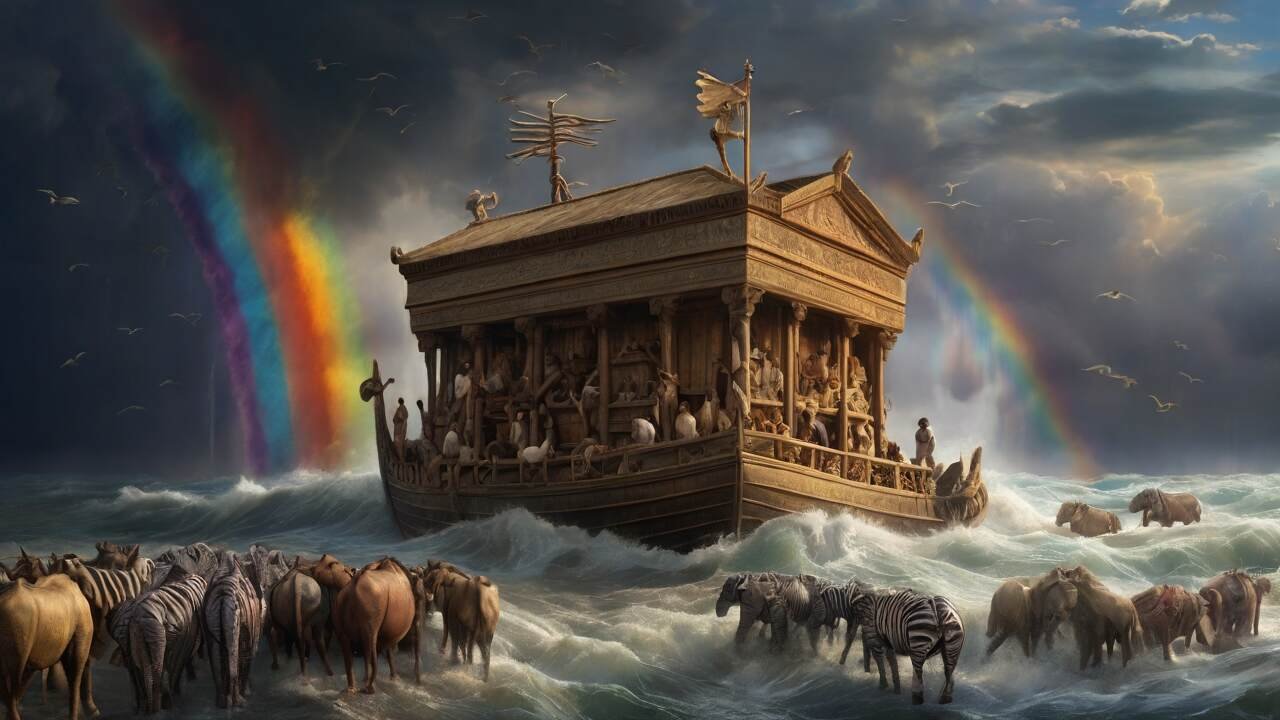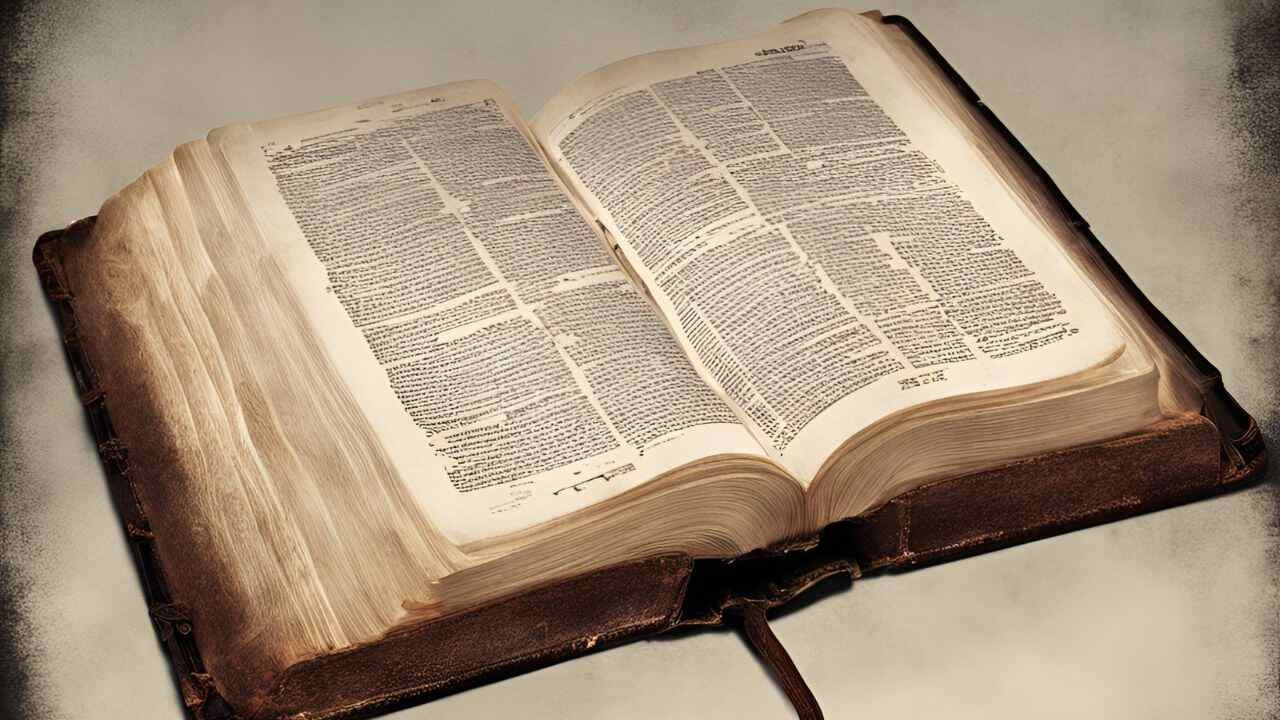The Book of Revelation, the final book of the Bible, is a rich tapestry of celestial beings, spiritual warfare, and divine messengers. Angels play a central role in the apocalyptic visions and prophecies described throughout this captivating text. A closer examination reveals over 20 different angelic characters, each with their own unique appearances and roles, underscoring the vital importance of these biblical symbols in the realm of apocalyptic literature.
From the “revealing angel” in chapters 1 and 22, to the angels of the seven churches in chapters 2-3, and the myriads of angels worshipping in chapter 5, the sheer number and variety of angels portrayed in Revelation highlights their significance as agents of God’s sovereignty over the earth. These celestial beings serve as both spiritual warriors and divine messengers, conveying the sovereignty of the Almighty and the unfolding of His eternal plan.
Key Takeaways
- The Book of Revelation is rich in angelic characters, with over 20 distinct angelic beings mentioned throughout the text.
- Angels play a central role in the apocalyptic visions and prophecies, serving as celestial warriors, divine messengers, and agents of God’s sovereignty.
- The Book of Enoch and other apocalyptic literature provide valuable context for understanding the intricate angelic hierarchies and symbolism featured in Revelation.
- Archangels like Michael and Gabriel, as well as the cherubim and seraphim, are prominently featured in Revelation, highlighting their significance in biblical apocalyptic literature.
- The sheer number and variety of angels in Revelation underscores their vital importance in conveying the unfolding of God’s eternal plan for the earth.
Angelic Characters in Revelation
The angels described in the Book of Revelation fulfill a diverse range of roles and appear in various forms throughout the apocalyptic text. These celestial beings serve as messengers, warriors, and agents of God’s divine will, underscoring the multifaceted nature of angelic characters in biblical symbolism.
Angelic Appearances and Roles
Some angels, like the “revealing angel” in Revelation 1:1 and 22:16, play a key narrative role in communicating John’s apocalyptic visions. Others, such as the “angels of the seven churches” in chapters 2-3, seem to represent the spiritual guardianship of the early Christian congregations. The myriads of angels worshiping around God’s throne in 5:11 symbolize the vastness of the heavenly host.
Other angels command forces on earth, like the four angels holding back the four winds (7:1) or the angel with authority over fire (14:18), demonstrating God’s sovereignty. While most angels remain unnamed, significant figures like the archangel Michael (12:7) and the “angel of the abyss” (9:11) are specifically identified, evoking imagery from Jewish apocalyptic literature like the Book of Enoch.
The diversity of angelic characters in Revelation underscores their multifaceted roles as celestial warriors, divine messengers, and agents of God’s will. These angelic appearances and angelic roles are integral to the book’s apocalyptic visions and biblical symbolism.
| Angelic Character | Role | Significance |
|---|---|---|
| “Revealing Angel” | Communicates John’s visions | Key narrative figure |
| “Angels of the Seven Churches” | Represents spiritual guardianship | Symbolizes early Christian congregations |
| Myriads of Angels | Worship around God’s throne | Symbolizes the vastness of the heavenly host |
| Four Angels Holding Back Winds | Command forces on earth | Demonstrates God’s sovereignty |
| Angel of the Abyss | Specifically identified figure | Evokes imagery from Jewish apocalyptic literature |
“Then I looked, and I heard the voice of many angels around the throne and the living creatures and the elders; and the number of them was myriads of myriads, and thousands of thousands.”
How are angels portrayed in apocalyptic literature like the Book of Revelation?
In the realm of apocalyptic literature, angels play a central and multifaceted role, particularly in the Book of Revelation. These celestial beings are depicted as powerful divine messengers, serving as intermediaries between God and humanity, and carrying out His sovereign will on earth.
The Book of Revelation presents a diverse array of angelic figures, each with their own unique purpose and function. From the “revealing angel” who communicates John’s visions to the “angels of the seven churches” who represent the spiritual guardianship of the congregations, angels are omnipresent throughout the text. These celestial beings also exercise authority over earthly realms, commanding forces like the winds and fire, underscoring their vital role as agents of God’s sovereignty.
This portrayal of angels in Revelation aligns with their depiction in other Jewish apocalyptic texts, such as the Book of Enoch. In these works, figures like the archangels Michael and Gabriel play crucial roles, further emphasizing the importance of angelic characters in the apocalyptic tradition.
The prominence and variety of angels in Revelation underscore their essential function as celestial warriors, divine messengers, and guardians of God’s plan. Their multifaceted roles and the reverence with which they are treated highlight the central place of angels in apocalyptic literature and the Book of Revelation in particular.
“Then I saw another mighty angel coming down from heaven, wrapped in a cloud, with a rainbow over his head, and his face was like the sun, and his legs like pillars of fire.”
– Revelation 10:1
This vivid depiction of an angel in Revelation exemplifies the biblical symbolism and celestial beings that are central to the apocalyptic genre. Through these divine messengers, the text conveys the grandeur and power of God’s eternal plan for the world.
Discontinuity and Angelic Characters
One striking feature of the angelic characters in the Book of Revelation is their angelic discontinuity and lack of detailed explanation. Many angels, such as the “revealing angel” in 1:1 and 22:16, simply appear and disappear without further elaboration, functioning more as narrative techniques than fully developed characters. The frequent introduction of “another angel” accompanied by the phrase “And I saw” further contributes to this sense of disruption of audience expectations, as new angelic figures are rapidly introduced to move the plot forward.
This discontinuity and lack of explanation surrounding the angels in Revelation aligns with the text’s broader stylistic and genre-based strategies to unsettle the reader and invite them into the apocalyptic vision. The sidelining of angelic actors in favor of a focus on the primary figures of God and the Lamb also supports the theological concerns and movements of the plot, with angels often functioning as symbolic representations of divine power and sovereignty.
The disruption of audience expectations is a characteristic technique in apocalyptic literature, serving to provoke active engagement and interpretation from the reader. By introducing angels in a discontinuous manner, the Book of Revelation challenges the reader to grapple with the biblical symbolism and discern the deeper meaning behind these angelic characters and their roles in the unfolding narrative.
“The discontinuity and lack of explanation surrounding the angels in Revelation aligns with the text’s broader stylistic and genre-based strategies to unsettle the reader and invite them into the apocalyptic vision.”
Structural Roles of Angels
In the Book of Revelation, angels play not only thematic and theological roles but also serve as crucial structural devices within the narrative. The introduction of angelic figures helps John, the author, to organize and transition between the various vision sections that comprise this apocalyptic text.
For instance, the six unnamed “angels” in chapter 14 function to tie together the scenes of the grain harvest and grape harvest, providing a sense of structural unity to these related visions. Similarly, the repeated mention of “one of the seven angels with the seven bowls” in chapters 17 and 21 reinforces the contrast between the visions of the great prostitute and the bride of the Lamb.
Rather than focusing on the specific identity or role of these angels, John appears more interested in using them as structural devices to shape the overall flow and organization of his apocalyptic narrative. This technique aligns with the broader narrative techniques employed in Revelation to unsettle the reader’s expectations and invite active engagement with the biblical symbolism and apocalyptic literature.
“John uses the introduction of angelic figures as a device to organize and transition between different vision sections.”
By strategically positioning angels as structural elements, John is able to guide the reader through the complex and multilayered visions that characterize the Book of Revelation. This innovative use of angels as structural devices contributes to the text’s enduring influence and the ongoing scholarly fascination with its narrative techniques and biblical symbolism.

| Angel’s Role | Example | Purpose |
|---|---|---|
| Tying together related visions | The six unnamed angels in Revelation 14 | Providing structural unity to the grain harvest and grape harvest scenes |
| Reinforcing contrast between visions | The “one of the seven angels with the seven bowls” in Revelation 17:1 and 21:9 | Highlighting the contrast between the visions of the great prostitute and the bride of the Lamb |
Angelic Ministry and the Church
Throughout the Book of Revelation, angels are depicted as playing a crucial role in relation to the church and the people of God. The “angels of the seven churches” in chapters 2-3 represent the spiritual guardianship and oversight of the congregations, underscoring the idea that the church is under the protection and superintendence of heavenly powers.
Other angels, such as the “mighty angel” in chapter 10 and the angel standing in the sun in 19:17, serve as symbols of God’s power and sovereignty, providing encouragement and reassurance to the beleaguered believers. The sheer number of angels mentioned, including the myriads worshiping around God’s throne, suggests an abundance of celestial assistance available to the church, even in the face of intense spiritual warfare and persecution.
This portrayal of angelic ministry aligns with broader themes in apocalyptic literature, where the people of God are depicted as being on the “right side of history,” despite their fragility and minority status in the world. The angels in Revelation thus serve to reinforce the church’s divine protection and the ultimate triumph of God’s kingdom.
“Then I looked, and I heard around the throne and the living creatures and the elders the voice of many angels, numbering myriads of myriads and thousands of thousands.” (Revelation 5:11)
The abundance of angels mentioned in Revelation underscores the angelic guardianship and biblical symbolism associated with the church’s role in the unfolding spiritual warfare of the apocalyptic end times.
Through this vivid imagery, the Book of Revelation reassures the faithful that they are not alone, but rather are surrounded by a vast host of heavenly warriors ready to assist and protect the people of God as they navigate the turbulent waters of the last days.
Conclusion
The angels portrayed in the Book of Revelation and other apocalyptic literature play a vital and multifaceted role, serving as celestial warriors, divine messengers, and agents of God’s sovereignty. Their diverse appearances and functions, from the “revealing angel” to the myriads of worshiping angels, underscore the importance of these powerful spiritual beings in the apocalyptic visions and prophecies.
While the discontinuity and lack of explanation surrounding many of the angelic characters may initially unsettle the reader, this narrative technique aligns with the broader strategies in apocalyptic literature to provoke active engagement and interpretation. By using angels as structural devices and symbols of divine power and protection, the author invites the audience to recognize the church’s place on the “right side of history,” despite their apparent fragility and minority status.
Overall, the portrayal of angels in the Book of Revelation reflects the crucial role these celestial beings play in the unfolding of God’s plan for the world. As divine messengers and agents of biblical symbolism, the angels in apocalyptic literature serve as a powerful reminder of the unseen spiritual realm and the ultimate sovereignty of the Almighty.
FAQ
How are angels portrayed in the Book of Revelation?
Angels play a central and multifaceted role in the Book of Revelation, functioning as celestial warriors, divine messengers, and agents of God’s sovereignty. The text depicts a wide variety of angelic characters, including the “revealing angel,” the “angels of the seven churches,” and myriads of angels worshiping around God’s throne, underscoring their vital importance in apocalyptic literature.
What are the different roles and appearances of angels in Revelation?
The angels described in Revelation fulfill a range of roles, from the “revealing angel” who communicates John’s visions, to the “angels of the seven churches” representing spiritual guardianship, to the angels commanding earthly forces. This diversity of angelic characters aligns with their depiction in other Jewish apocalyptic texts, such as the Book of Enoch.
How do the angels in Revelation contribute to the overall structure and narrative techniques of the text?
The angels in Revelation often function as narrative devices, with their discontinuous appearances and lack of explanation serving to unsettle the reader’s expectations and invite active engagement with the text. John also employs angels as structural devices, using them to organize and transition between different vision sections, reinforcing the overall flow of the apocalyptic narrative.
What is the significance of angels in relation to the church and the people of God in Revelation?
The angels in Revelation are depicted as playing a crucial role in relation to the church, providing spiritual guardianship and protection. The “angels of the seven churches” represent this heavenly oversight, while other angels serve as symbols of God’s power and sovereignty, offering encouragement and reassurance to the beleaguered believers.








